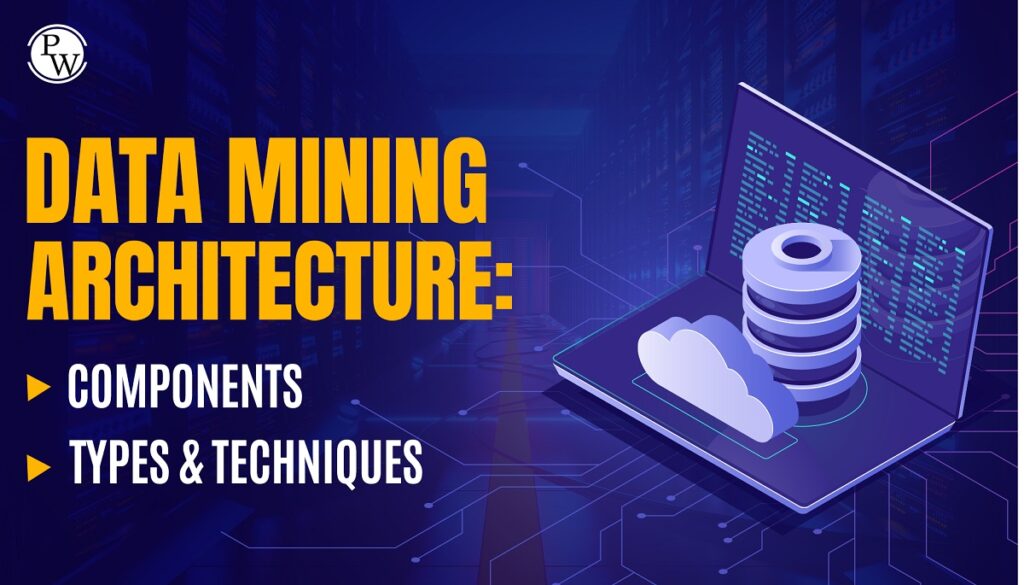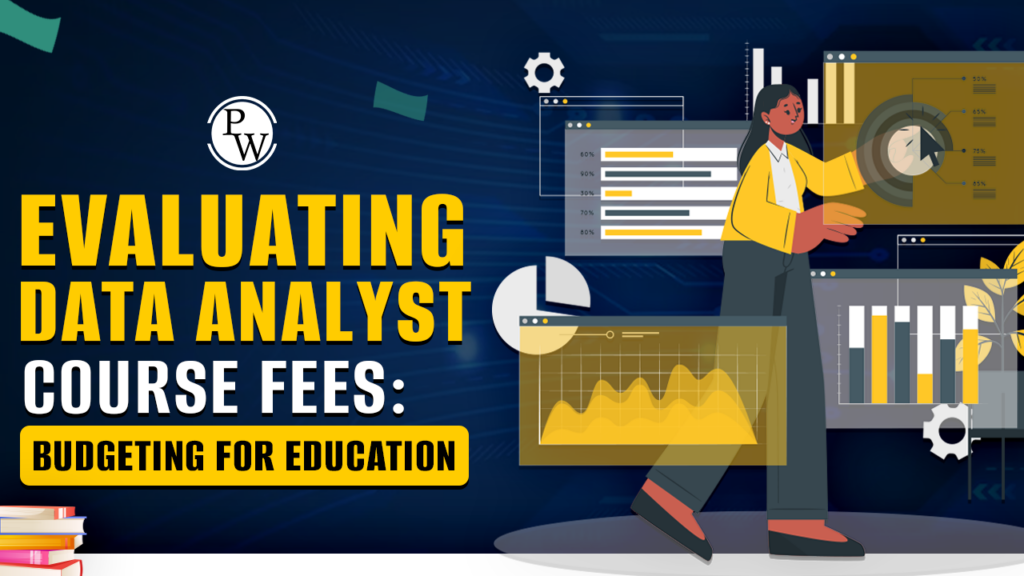Methods of Data Analytics: Data isn’t just information; it’s the heartbeat of decision-making. The ability to harness and make sense of this vast sea of information has become paramount in a world driven by information, where data flows like a digital river. In our increasingly data-driven world, the ability to extract valuable insights from raw information has become a coveted skill! In this blog, we’ll talk about some effective methods of data analytics, data analytics processes, importance, etc.
If you want to venture into the field of data analytics, PhysicsWallah’s Full-Stack Data Analytics course could help you a lot! Our comprehensive curriculum, taught by industry experts, will equip you with the knowledge and experience to handle any data analytics challenge.
What Is Data Analysis?
Analysing data means checking, cleaning, changing, and modelling information to find valuable insights, make conclusions, and aid decision-making. It’s a systematic way of looking at and explaining data, helping organisations understand their operations, customer actions, and market patterns better.
Also Read: How to Become a Data Analyst in 2023
Purpose of Data Analysis
The main aim of data analysis is to get useful insights from basic data. Whether it’s structured or not, the objective is to expose patterns, connections, and trends that can guide important choices, boost efficiency, and lead to business triumph.
Role of Data Analysis in Extracting Meaningful Insights
Data analysis serves as the bridge between raw data and valuable insights. By applying statistical and mathematical techniques, analysts can transform complex datasets into understandable and actionable information. This process is crucial for organisations seeking a competitive edge in their respective industries.
Why is Data Analytics Important?
Decision-Making and Strategy
Effective organisational choices hinge on smart decision-making. Data analysis empowers decision-makers with the info necessary for wise choices. Strategic planning, resource allocation, and risk management all gain from insights obtained through thorough data analysis.
Identifying Patterns and Trends
Data analysis enables the identification of patterns and trends within datasets that may not be immediately apparent. Whether it’s recognizing changing consumer preferences or anticipating market shifts, the ability to spot trends early on is a key advantage in today’s fast-paced business environment.
Driving Business Performance
In the competitive landscape of the business world, performance is paramount. Data analysis contributes to optimising business processes, improving efficiency, and fostering innovation. By leveraging data insights, organisations can streamline operations and enhance overall performance.
What Is the Data Analytics Process?
The data analysis process involves several key steps, each playing a crucial role in transforming raw data into actionable insights.
Data Collection
The journey of data analysis begins with the collection of relevant data. This may involve gathering information from various sources, including databases, surveys, and external datasets. The accuracy and completeness of the collected data set the foundation for meaningful analysis.
Data Cleaning and Preprocessing
Raw data is seldom flawless, often riddled with errors, inconsistencies, and missing values. Data cleaning, or scrubbing, identifies and corrects errors, boosting dataset quality. Preprocessing transforms raw data into an analysis-friendly format, addressing missing data and outliers.
Data Exploration
With cleaned and preprocessed data, analysts perform exploratory data analysis (EDA) for an initial dataset grasp. This involves generating summary stats, visualisations, and exploratory techniques to uncover patterns or anomalies.
Data Modeling
Data modelling involves the application of statistical and mathematical models to the dataset. Identifying links among variables, predicting outcomes, and categorising data are goals of this step. Techniques involve regression analysis, machine learning, and predictive modelling.
Data Visualization
Data visualisation is a potent means to present intricate information clearly. Visual elements like charts and graphs aid in conveying findings to both technical and non-technical audiences, enhancing comprehension of the derived insights from the data.
Interpretation and Communication of Results
Analysing data wraps up with interpreting results and sharing findings. It means turning technical analysis into practical insights for decision-making.
Types of Data Analysis
Descriptive Analysis
Descriptive analysis involves summarising and presenting key features of a dataset. This type of analysis provides a snapshot of the main characteristics, such as mean, median, and mode, allowing stakeholders to understand the central tendencies and variability within the data.
Diagnostic Analysis
Diagnostic analysis aims to uncover the root causes of specific events or trends within a dataset. Digging deeper into variable connections, it explains why specific outcomes happened. This analysis is vital for problem-solving and finding areas to enhance.
Predictive Analysis
Predictive analysis uses historical data and statistical algorithms to make predictions about future events. By identifying patterns and trends, analysts can build models that forecast potential outcomes. This type of analysis is valuable for businesses looking to anticipate market changes, customer behaviours, or financial trends.
Read more: Predictive Analysis: Predicting the Future with Data
Prescriptive Analysis
Prescriptive analysis goes beyond predicting future outcomes. It suggests actions to optimise results based on the predictions made by predictive models. This type of analysis provides actionable insights, guiding decision-makers on the most effective strategies to achieve desired outcomes.
Methods of Data Analytics
1. Quantitative Analysis
Quantitative analysis deploys numerical data and mathematical models for pattern and relationship comprehension. Statistical methods, hypothesis testing, and regression analysis emerge as prevalent techniques. This approach is prevalent in fields such as finance, economics, and experimental sciences.
2. Qualitative Analysis
Quantitative analysis deploys numbers and maths models to grasp patterns and relationships. Stats techniques, hypothesis testing, and regression are typical tools. Techniques like content analysis, thematic analysis, and grounded theory are employed in qualitative analysis, making it essential in social sciences and humanities.
3. Mixed-Methods Analysis
Mixed-methods analysis combines both quantitative and qualitative approaches to gain a comprehensive understanding of a research question. This integrative approach allows researchers to triangulate findings and provides a more robust interpretation of complex phenomena.
4. Exploratory Data Analysis (EDA)
Exploratory Data Analysis involves visually and statistically exploring datasets to identify patterns, outliers, and trends. Techniques like histograms, scatter plots, and box plots are commonly used in EDA. This method is particularly useful in the initial stages of analysis to guide further investigation.
How to Analyse Data?
Choosing the Right Data Analysis Approach
Selecting the appropriate data analysis approach depends on the nature of the data and the research question. Quantitative data may require statistical techniques, while qualitative data may involve coding and thematic analysis. A mixed-methods approach can provide a holistic perspective.
Selecting Appropriate Tools and Techniques
Choosing the right tools and techniques is crucial for accurate and efficient analysis. Statistical software such as R, Python, and SAS are popular for quantitative analysis, while qualitative analysis may involve tools like NVivo or ATLAS.ti. It’s essential to match the tools to the specific requirements of the analysis.
Ensuring Data Accuracy and Reliability
Data accuracy is paramount in analysis. Analysts must verify the reliability of the data source, address missing or inconsistent data, and ensure that the chosen analysis methods are appropriate for the dataset. Rigorous validation processes contribute to the credibility of the analysis.
Methods of Data Analytics in Research
Role of Data Analytics in Research
Data analytics is crucial in research, organising data systematically for analysis and interpretation. Researchers employ it to test hypotheses, find patterns, and make evidence-based conclusions, boosting the rigour and objectivity of studies.
Integrating Data Analysis into the Research Process
Effective integration of data analysis into the research process involves defining research questions, selecting appropriate data sources, and choosing relevant analysis methods. Researchers should align their data analysis plan with the overall research design to ensure a cohesive and comprehensive study.
Examples of Successful Data Analytics in Research Studies
Numerous research studies across disciplines showcase the power of data analytics. From epidemiology and social sciences to business and technology, data analytics has facilitated groundbreaking discoveries and insights. Case studies and examples demonstrate how data-driven approaches enhance the validity and reliability of research findings.
Top Data Analysis Tools
Several tools cater to the diverse needs of data analysts. Tools like Microsoft Excel, R, Python, SAS, and Tableau are widely used. Each has unique features, and understanding their strengths and limitations is key to choosing the right one for analysis.
Features and Capabilities of Each Tool
Microsoft Excel, user-friendly, is often used for basic analysis. R and Python, powerful programming languages, come with extensive libraries for statistical analysis and machine learning. SAS is renowned for its robust statistical procedures, while Tableau excels in data visualisation.
Choosing the Right Tool for Specific Analysis Needs
Tool choice hinges on analysis intricacy, dataset scale, and user expertise. Analysts weigh factors like data visualisation needs, statistical depth, and automation requirements to select the optimal tool for a specific task.
Read more: Essential Data Analytics Tools for Successful Analysis
Choose the Right Program
Considerations for Selecting Data Analysis Programs
When considering data analysis programs, individuals should assess their specific needs, skill level, and the industry’s demands. Choosing the correct tool relies on analysis complexity, dataset scale, and user skill. Analysts weigh data visualisation needs, statistical depth, and automation necessity for optimal tool selection.
Comparison of Different Programs
When comparing data analysis programs, factors like usability, scalability, and community support come into play. Each program boasts unique strengths, and the decision frequently hinges on user preferences and analysis specifics. Valuable insights can be gleaned from online reviews, tutorials, and community forums.
Tips for Learning and Mastering Data Analysis Tools
Learning data analysis tools requires a combination of theoretical knowledge and hands-on practice. Online courses, tutorials, and interactive exercises can help individuals acquire the necessary skills. Mastering a tool involves continuous learning and staying updated with new features and functionalities.
How to Become a Data Analyst?
Educational Background and Skills Required
Acquiring data analysis prowess usually demands a solid grasp of maths, stats, and computer science. A bachelor’s in a pertinent domain is usually a baseline. Also, honing abilities in programming tongues like Python or R, mastering data visualisation, and handling databases are crucial for excelling in this realm.
Steps to Enter the Field of Data Analysis
Entering the realm of data analysis usually demands a solid grasp of maths, statistics, and computer science. Many times, a bachelor’s degree in a pertinent field is the baseline. Furthermore, mastering programming languages like Python or R, honing data visualisation skills, and handling databases becomes crucial for triumph.
Career Paths and Opportunities for Data Analysts
Diverse opportunities unfold for data analysts across sectors such as finance, healthcare, marketing, and technology. The specific role—be it business analyst, financial analyst, or data scientist—depends on personal proficiency and preferences. Progressing in this domain hinges on ongoing professional growth and keeping pace with industry shifts.
Types of Data Analysis Methods in Research
Quantitative Research Methods
Quantitative research methods involve the collection and analysis of numerical data to test hypotheses and make predictions. Surveys, experiments, and statistical analyses are common in quantitative research. This approach provides measurable and statistically significant results, contributing to the empirical understanding of phenomena.
Qualitative Research Methods
Qualitative research methods focus on exploring and understanding non-numerical data, emphasising context, meanings, and experiences. Techniques such as interviews, focus groups, and content analysis are employed in qualitative research. This approach is valuable for gaining in-depth insights into complex social, cultural, and psychological phenomena.
Integrating Multiple Methods for Comprehensive Analysis
Some research studies benefit from combining both quantitative and qualitative methods. This mixed-methods approach allows researchers to triangulate findings, providing a more comprehensive understanding of the research question. The integration of multiple methods enhances the robustness and validity of research outcomes.
What Is the Importance of Data Analysis in Research?
In the realm of research, data analysis serves a crucial role in validating hypotheses, drawing conclusions, and contributing to the broader body of knowledge.
- Validating Hypotheses: Data analysis is the means by which researchers test hypotheses and determine the statistical significance of their findings.
- Making Informed Conclusions: The process of data analysis enables researchers to draw informed conclusions based on evidence. This contributes to the reliability and validity of research outcomes.
- Contributing to Scientific Knowledge: By analysing data and publishing results, researchers contribute to the collective knowledge within their field. This iterative process builds on existing understanding and propels the advancement of science.
Data Analysis Example
Case Study or Real-Life Scenario Illustrating Data Analysis
Consider a retail business aiming to optimise its product offerings. Through data analysis, the business collects and analyses customer purchase data, demographic information, and market trends. The analysis reveals patterns indicating a growing demand for eco-friendly products among a specific demographic. Armed with this insight, the business adjusts its inventory and marketing strategy, resulting in increased sales and customer satisfaction.
Step-by-Step Breakdown of the Analysis Process
This hypothetical case study highlights the step-by-step breakdown of the data analysis process, from data collection to interpretation of results. Each stage involves specific techniques, tools, and decisions made by the analysts to derive meaningful insights and drive strategic changes.
Lessons Learned from the Example
The example illustrates the practical application of data analysis in real-world scenarios. Key lessons include the importance of understanding customer behaviour, the need for accurate and relevant data, and the impact of data-driven decisions on business outcomes. Such case studies serve as valuable learning tools for aspiring data analysts.
Data Analysis Techniques in Qualitative Research
Coding and Categorization
Coding involves the systematic labelling of data to identify themes, patterns, or concepts. Researchers assign codes to segments of data, creating a structure for analysis. Categorization involves organising codes into broader categories, facilitating the interpretation of qualitative data.
Thematic Analysis
Thematic analysis aims to identify and analyse themes or patterns within qualitative data. It involves systematically coding data, searching for recurring themes, and interpreting their significance. Thematic analysis provides a flexible and accessible method for uncovering meaning in diverse datasets.
Grounded Theory
Grounded theory is an inductive research method that involves developing theories or explanations from the data itself. Researchers iteratively collect, code, and analyse data to generate concepts and theories. Grounded theory is particularly useful when exploring complex and poorly understood phenomena.
Narrative Analysis
Narrative analysis focuses on the stories people tell. Researchers examine narratives, whether in written or spoken form, to understand the meanings individuals attribute to their experiences. This approach is valuable for exploring subjective interpretations and cultural contexts.
Must Read: Data Analysis Courses for Beginners: Where to Start and What to Learn
Conclusion
Data quality is at the core of effective data analysis, and understanding the various aspects of the analysis process is essential for extracting meaningful insights. From choosing the right data analysis methods to selecting appropriate tools, this comprehensive guide provides a roadmap for navigating the dynamic field of data analysis. Whether you’re a seasoned data analyst or a novice exploring the possibilities, continuous learning and a commitment to data quality are key to success in the data-driven world. Stay curious, stay analytical, and unlock the power of data to drive informed decisions and innovation.
The PW Skills Full-Stack Data Analytics course can help you in securing a high-paying job as a data analyst. So, don’t wait! Enrol now and start your journey to becoming a full-stack data analyst.
FAQs
Are there ethical considerations in data analysis?
Ethical considerations in data analysis include ensuring the privacy of individuals, transparent reporting of findings, and avoiding biassed interpretations. Researchers must prioritise ethical practices to maintain the integrity of their analyses.
Can data analysis be applied to environmental studies?
Yes, data analysis plays a crucial role in environmental studies by examining trends in climate data, analysing the impact of human activities, and guiding conservation efforts. It helps researchers understand complex ecosystems and inform sustainable practices.
How does data analysis contribute to innovation in business strategies?
Data analysis contributes to innovation in business strategies by uncovering market trends, identifying emerging opportunities, and predicting consumer preferences. It enables businesses to adapt and stay competitive in dynamic markets.
Can data analysis help in crisis management?
Absolutely. Data analysis aids crisis management by providing real-time insights, assessing the impact of crises, and facilitating data-driven decision-making. This helps organisations respond effectively and allocate resources where they are most needed.
Is there a difference between exploratory and confirmatory data analysis?
Exploratory data analysis involves uncovering patterns without preconceived hypotheses, while confirmatory data analysis tests specific hypotheses. Both approaches are valuable in different stages of research, providing a holistic view of the data.
How does data analysis contribute to personalised medicine?
Data analysis in personalised medicine involves analysing genetic, clinical, and lifestyle data to tailor medical treatments to individual patients. It enables more precise diagnoses, treatment plans, and better patient outcomes.
Can data analysis help in detecting fraud in financial transactions?
Yes, data analysis is instrumental in detecting fraud in financial transactions by identifying unusual patterns, anomalies, and suspicious activities. It allows financial institutions to take preventive measures and enhance security.
How does data analysis contribute to educational research?
In educational research, data analysis helps assess the effectiveness of teaching methods, identify learning trends, and inform curriculum development. It supports evidence-based decision-making to enhance the educational experience.
What is the significance of data visualisation in data analysis?
Data visualisation is crucial in data analysis as it transforms complex datasets into accessible and understandable visual representations. It helps communicate findings effectively and facilitates decision-making across various audiences.
Can data analysis be used to measure the success of employee training programs?
Absolutely. Data analysis can assess the effectiveness of employee training programs by analysing performance metrics, feedback, and skill acquisition. It provides insights for refining training strategies and maximising impact.





